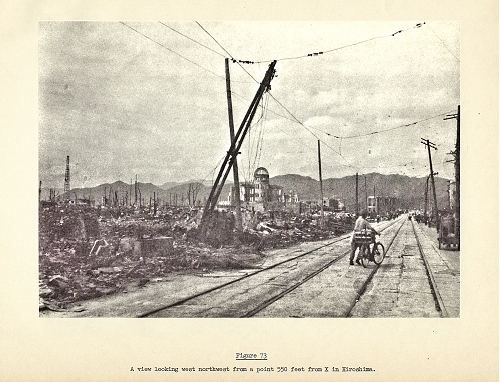

The Peace Memorial Museum, and Mayors for Peace project, share the dual aims of informing people about the impacts of nuclear warfare and calling for denuclearisation. Jiji Press/EPA Contemporary relevance: the agenda of denuclearisation Each day, thousands more paper cranes are delivered to honour their memory and as a call for peace.Ī young girl floats a paper lantern to remember the victims of the Hiroshima bombing on the anniversary last month. I saw schoolchildren honouring Sadako and all the lost children at the Children’s Peace Memorial. She had famously folded more than 1,000 paper cranes in the hope of recovery. Nine years later, Sadako developed radiation-induced leukaemia and died soon after at the age of 12. She was apparently uninjured by the blast, but was exposed to toxic “black rain” as she fled the city with her family. The most famous child victim, Sadako Sasaki, was two years old when the bomb fell in Hiroshima. Visitors learn about the lingering impacts of radiation exposure on victims and their descendants, including pregnancy loss, birth defects and untold psychological damage.īan the bomb: 70 years on, the nuclear threat looms as large as ever
Aftermath of hiroshima and nagasaki series#
The museum also traces, through a series of confronting exhibits, the pain and terror of those who died slowly from horrific burns and the effects of radiation. The Peace Memorial Museum reveals the scale of instant destruction as the bomb detonated. It shows a collection of memoirs by parents of junior high school students killed by the bomb. The film, The Twinkling Stars Know Everything, is showing throughout 2018 in a memorial hall at the park. It was an overwhelming and emotional experience, not least because the park and museum were filled with Japanese schoolchildren paying respect to the dead and learning about the consequences of nuclear warfare.Ĭhildren’s peace memorial, Hiroshima. In June, I visited the Hiroshima Peace Memorial Museum. Memorialising the impacts of the atomic bombings Only recently have we come to appreciate that the last shot of the second world war was also the opening scene of the cold war – that the bomb was a cause as much as a conclusion.


When I first started teaching, we just taught that the atomic bomb brought the war to an end. Perhaps, some revisionists argue, the US actually wanted to prove its superior military capacity to the Soviet Union and was determined to use the atomic bombs for that purpose.Įither way, the wartime alliance between the US and USSR soon dissolved into intense rivalry, which continues to influence global relations seven decades on.Įarly in the 21st century, historian John Clare exposed this key enduring legacy of the bombings: They suggest Japan was more compelled to surrender by the Soviet invasion of Manchuria in the same week of August 1945 than by the atomic bombings. In contrast, “ revisionist” accounts have claimed that Japan’s surrender could have been secured if the US had guaranteed that Emperor Hirohito would be allowed to remain on the throne. Questions of moral distinction between atomic and other types of bombings have therefore been raised. Some have noted that the fire-bombing of Tokyo and other Japanese cities during the war also inflicted devastating casualties. World politics explainer: The Great War (WWI) They also claim that a land invasion of Japan by US and Soviet forces would have taken many more lives than the bombs did. I recommend this episode of the History of Japan podcast by historian Isaac Meyer for an airing of the conflicting arguments for and against the use of the bombs.īriefly, “ traditionalist” accounts of the bombings have argued that the bombs were necessary to force Japan’s surrender. It is impossible to properly address the competing perspectives in this article. Why did the US use the bomb?įew historical questions are subject to such enduring controversy as this one. Hibakusha - the Japanese term for explosion-affected people - continue to campaign for Nagasaki to retain its sad distinction. Nagasaki receives less attention in analysis of the bombings, despite being the last place a nuclear weapon was used in warfare. Still, at least 75,000 people died there in total. The total death toll in Nagasaki was lower in comparison, as parts of the city were shielded by mountains. Today, it is preserved at the Peace Memorial Park and the city has been rebuilt around it. The Genbaku (Atomic Bomb) Dome was the only building left standing near the hypocentre. In addition to the human toll, almost 63% of Hiroshima’s buildings were destroyed and a further 29% damaged by the bomb.

Cartoon depicting the horrors of the Hiroshima bombing on the city’s residents.


 0 kommentar(er)
0 kommentar(er)
